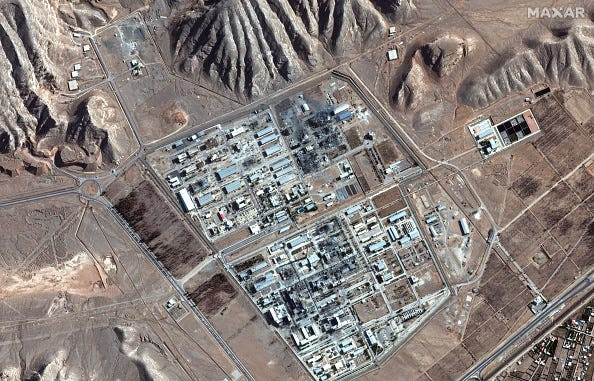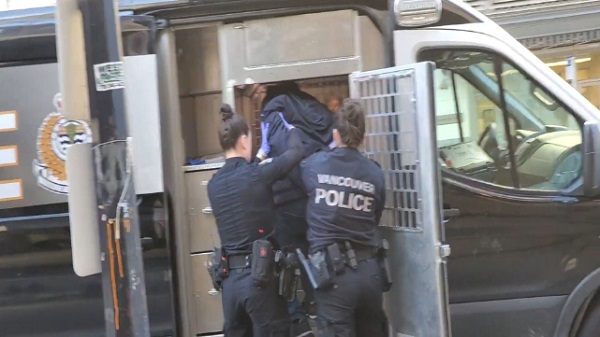Business
Why a domestic economy upgrade trumps diversification
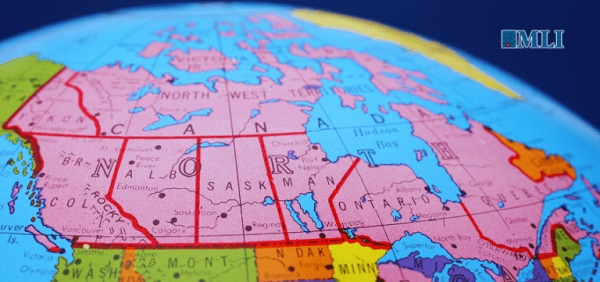
From the Macdonald Laurier Institute
By Stephan Nagy for Inside Policy
The path to Canadian prosperity lies not in economic decoupling from the US but in strategic modernization within the North American context.
President Donald Trump’s ongoing tariff threats against Canadian exports has sent shockwaves through Ottawa’s political establishment. As businesses from Windsor to Vancouver brace for potential economic fallout, a fundamental question has emerged: Should Canada diversify away from its overwhelming economic dependence on the United States, or should it instead use this moment to modernize and upgrade its economic hard and software within the North American context? The evidence overwhelmingly supports the latter approach in which Canada reduces interprovincial trade barriers and regulations, builds infrastructure to move energy and other resources within Canada, and invests in Canadian human capital and relationships with the US to maximize synergies, stakeholder buy-in and mutual benefit.
The knee-jerk reaction to blame Trump’s economic nationalism misses a crucial point: America’s retreat from championing global free trade began well before his unorthodox political ascendance in 2016. The Obama administration’s signature Trans-Pacific Partnership (TPP) faced mounting bipartisan skepticism before Trump withdrew from it in 2017. Hillary Clinton, during her presidential campaign, explicitly stated she would oppose the deal, reversing her earlier support. “I will stop any trade deal that kills jobs or holds down wages, including the Trans-Pacific Partnership,” Clinton declared during a campaign speech in Michigan in August 2016.
When President Joe Biden took office, rather than resurrect the TPP, his administration proposed the Indo-Pacific Economic Framework (IPEF). Unlike traditional trade agreements, the IPEF conspicuously omitted market access provisions while emphasizing supply chain resilience and environmental standards. During the IPEF ministerial meeting in Los Angeles in September 2022, U.S. Trade Representative Katherine Tai specifically noted that the framework “moves beyond the traditional model” of free trade agreements.
These policy evolutions reflect a deeper transformation in American economic thinking: a bipartisan consensus has emerged around industrial policy aimed at rebuilding domestic manufacturing, securing critical supply chains, and maintaining technological leadership against authoritarian competitors such as China.
Prime Minister Justin Trudeau and his Cabinet fundamentally misunderstood these shifts, leading to a series of diplomatic missteps that have damaged Canada-US relations. Most damaging has been a pattern of public rhetoric dismissive of both Trump personally and his MAGA supporters more broadly.
In June 2018, following the G7 summit in Charlevoix, Quebec, Trudeau declared in a press conference that Canada “will not be pushed around” by the United States, characterizing Trump’s tariffs as “insulting.” This prompted Trump to withdraw his endorsement of the summit’s joint statement and label Trudeau as “very dishonest and weak” on Twitter.
Former Deputy Prime Minister Chrystia Freeland repeatedly aligned the MAGA movement with authoritarianism. In an August 2022 speech at the Brookings Institution, she characterized Trump supporters as part of a global “anti-democratic movement.” In October 2023, she went further, drawing parallels between MAGA and authoritarian regimes like Russia and China. These statements resonate poorly with nearly half of American voters who supported Trump in recent elections and are borderline disinformation with such exaggerated mischaracterizations of American voters.
Former Foreign Affairs Minister François-Philippe Champagne was caught on camera in December 2022 referring to Trump’s policies as “deranged” while speaking with European counterparts. The video, which social media users circulated widely, further inflamed tensions between the administrations.
Such diplomatic indiscretions might be dismissed as political theatre if they didn’t coincide with concrete policy failures. The Trudeau government neglected critical infrastructure projects that would have strengthened North American economic integration while reducing Canada’s vulnerability to U.S. policy shifts.
To illustrate, Japan and Germany approached Canada to secure liquefied natural gas (LNG) exports as part of their efforts to reduce reliance on Russian energy supplies. Japan expressed high expectations for Canadian LNG during Prime Minister Fumio Kishida’s visit, while Germany explored LNG opportunities during Chancellor Olaf Scholz’s visit, emphasizing the urgency of diversifying energy sources due to geopolitical tensions. However, Trudeau rejected these requests, citing a weak business case for LNG exports from Canada’s East Coast due to logistical challenges and lack of infrastructure. Instead, Trudeau shifted focus to clean energy initiatives and critical minerals, reflecting Canada’s evolving industrial policy priorities.
The economic relationship between Canada and the US represents perhaps the most thoroughly integrated bilateral commercial partnership in the world. The statistics alone tell a compelling story: daily two-way trade exceeds $3 billion, supporting approximately 2.7 million Canadian jobs – roughly one-in-six workers in the country.
This integration manifests in countless ways across industries.
For example, in automotive manufacturing, a single vehicle assembled in Ontario typically crosses the Canada-US border seven times during production. A Honda Civic assembled in Alliston, Ontario, contains components from both countries, with engines from Ohio and transmissions from Georgia integrated with Canadian-made bodies and electronics.
The energy infrastructure between the two nations functions essentially as a single system. The North American power grid delivers Canadian hydroelectricity to major US markets, while Canadian refineries process crude oil from both countries. TransCanada’s natural gas pipeline network serves both markets seamlessly, with approximately 3.2 trillion cubic feet flowing between the countries annually.
In aerospace, Bombardier’s commercial aircraft division collaborates with American suppliers like Pratt & Whitney and Collins Aerospace, creating integrated supply chains that span the border. Montreal’s aerospace cluster works in close coordination with counterparts in Seattle and Wichita.
Beyond traditional industries, American-Canadian technological collaboration has accelerated in recent years. For example, the Vector Institute in Toronto has established formal research partnerships with MIT’s Computer Science and Artificial Intelligence Laboratory, collaborating on foundational AI research. Their joint papers on neural network optimization have been cited more than 3,000 times since 2020.
Quantum computing initiatives at the University of Waterloo’s Institute for Quantum Computing maintain ongoing research exchanges with Google’s quantum computing team in Santa Barbara, California. Their shared work on quantum error correction protocols has advanced the field significantly.
In clean technology, Hydro-Québec’s energy storage division and Massachusetts-based Form Energy announced in 2023 a $240 million joint venture developing grid-scale iron-air batteries to enable renewable energy deployment across North America.
The SCALE.AI supercluster, headquartered in Montreal, includes American tech giants like Microsoft, Amazon, and IBM collaborating with Canadian start-ups on supply chain optimization technologies.
Against this backdrop of deep integration, calls for Canada to diversify away from the US toward markets like China reflect wishful thinking rather than economic reality. Dezan Shira & Associates in its China Briefing advocated expanding commercial ties with Beijing despite China’s documented history of economic coercion toward Canada.
This recommendation ignores the painful lessons of recent history. The arbitrary detention of Michael Kovrig and Michael Spavor for over 1,000 days in Chinese prisons, the imposition of punitive restrictions on Canadian agricultural exports following the arrest of Huawei executive Meng Wanzhou, and documented interference in Canadian domestic politics all demonstrate the risks of economic dependence on China.
The CD Howe Institute’s March 2025 analysis cites the overwhelming preponderance of trade flows: 76 per cent of Canadian exports go to the United States, compared to just 3.7 per cent to China, 2.4 per cent to the UK, and 2.32 per cent to Japan. As the report notes, “Given geographic proximity, linguistic compatibility, and complementary regulatory frameworks, any significant trade diversification away from the United States would require decades of sustained effort and acceptance of considerably higher transaction costs.”
Rather than pursuing illusory diversification, Canada should focus on strategic economic modernization that positions it as an indispensable partner in America’s industrial revitalization.
First, Canada must dismantle internal trade barriers that fragment its domestic market. The Canadian Federation of Independent Business estimates these interprovincial trade barriers cost the economy $130 billion annually – nearly 7 per cent of GDP. Harmonizing regulations and procurement practices would create a more efficient national market better positioned to integrate with the US economy.
Second, Canada should leverage its critical mineral resources – including lithium, cobalt, and rare earth elements – as strategic assets for North American supply chain security. The Minerals Security Partnership launched in 2022 provides a framework for such co-operation, but Canada has yet to fully capitalize on its geological advantages.
Third, Ottawa should accelerate east-west energy infrastructure development to enhance continental energy security. The proposed Energy East pipeline, which would have transported Western Canadian crude to Eastern refineries, fell victim to regulatory hurdles in 2017. Reviving such projects would reduce Eastern Canada’s dependence on imported oil while creating more resilient North American energy networks.
Finally, Canada should position itself as a key contributor to emerging technology initiatives. Trump’s proposed $500 billion AI infrastructure investment represents an opportunity for Canadian AI researchers and companies to integrate more deeply into US innovation ecosystems.
The path to Canadian prosperity lies not in economic decoupling from the US but in strategic modernization within the North American context. The integrated nature of the two economies – built over generations through geographic proximity, shared values, and complementary capabilities – represents a competitive advantage too valuable to abandon.
As American industrial policy evolves to address 21st-century challenges, Canada faces a choice: it can either adapt its economic framework to remain an essential partner in this transformation or risk marginalization through misguided diversification efforts. The evidence overwhelmingly supports the former approach.
For Canada, the answer is smarter, not less, North American integration.
Dr. Stephen Nagy is as a professor at the International Christian University, Tokyo and a senior fellow at the Macdonald-Laurier Institute. Concurrently, he is a visiting fellow with the Japan Institute for International Affairs (JIIA). He serves as the director of policy studies for the Yokosuka Council of Asia Pacific Studies (YCAPS), spearheading their Indo-Pacific Policy Dialogue series. He is currently working on middle-power approaches to great-power competition in the Indo-Pacific.
Business
Trump confirms 35% tariff on Canada, warns more could come
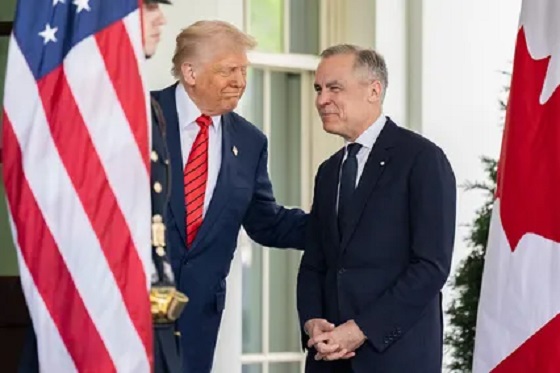
Quick Hit:
President Trump on Thursday confirmed a sweeping new 35% tariff on Canadian imports starting August 1, citing Canada’s failure to curb fentanyl trafficking and retaliatory trade actions.
Key Details:
- In a letter to Canadian Prime Minister Mark Carney, Trump said the new 35% levy is in response to Canada’s “financial retaliation” and its inability to stop fentanyl from reaching the U.S.
- Trump emphasized that Canadian businesses that relocate manufacturing to the U.S. will be exempt and promised expedited approvals for such moves.
- The administration has already notified 23 countries of impending tariffs following the expiration of a 90-day negotiation window under Trump’s “Liberation Day” trade policy.
Diving Deeper:
President Trump escalated his tariff strategy on Thursday, formally announcing a 35% duty on all Canadian imports effective August 1. The move follows what Trump described as a breakdown in trade cooperation and a failure by Canada to address its role in the U.S. fentanyl crisis.
“It is a Great Honor for me to send you this letter in that it demonstrates the strength and commitment of our Trading Relationship,” Trump wrote to Prime Minister Mark Carney. He added that the tariff response comes after Canada “financially retaliated” against the U.S. rather than working to resolve the flow of fentanyl across the northern border.
Trump’s letter made clear the tariff will apply broadly, separate from any existing sector-specific levies, and included a warning that “goods transshipped to evade this higher Tariff will be subject to that higher Tariff.” The president also hinted that further retaliation from Canada could push rates even higher.
However, Trump left the door open for possible revisions. “If Canada works with me to stop the flow of Fentanyl, we will, perhaps, consider an adjustment to this letter,” he said, adding that tariffs “may be modified, upward or downward, depending on our relationship.”
Canadian companies that move operations to the U.S. would be exempt, Trump said, noting his administration “will do everything possible to get approvals quickly, professionally, and routinely — In other words, in a matter of weeks.”
The U.S. traded over $762 billion in goods with Canada in 2024, with a trade deficit of $63.3 billion, a figure Trump called a “major threat” to both the economy and national security.
Speaking with NBC News on Thursday, Trump suggested even broader tariff hikes are coming, floating the idea of a 15% or 20% blanket rate on all imports. “We’re just going to say all of the remaining countries are going to pay,” he told Meet the Press moderator Kristen Welker, adding that “the tariffs have been very well-received” and noting that the stock market had hit new highs that day.
The Canadian announcement is part of a broader global tariff rollout. In recent days, Trump has notified at least 23 countries of new levies and revealed a separate 50% tariff on copper imports.
“Not everybody has to get a letter,” Trump said when asked if other leaders would be formally notified. “You know that. We’re just setting our tariffs.”
Business
Trump slaps Brazil with tariffs over social media censorship

From LifeSiteNews
By Dan Frieth
In his letter dated July 9, 2025, addressed to President Luiz Inácio Lula da Silva, Trump ties new U.S. trade measures directly to Brazilian censorship.
U.S. President Donald Trump has launched a fierce rebuke of Brazil’s moves to silence American-run social media platforms, particularly Rumble and X.
In his letter dated July 9, 2025, addressed to President Luiz Inácio Lula da Silva, Trump ties new U.S. trade measures directly to Brazilian censorship.
He calls attention to “SECRET and UNLAWFUL Censorship Orders to U.S. Social Media platforms,” pointing out that Brazil’s Supreme Court has been “threatening them with Millions of Dollars in Fines and Eviction from the Brazilian Social Media market.”


Trump warns that these actions are “due in part to Brazil’s insidious attacks on Free Elections, and the fundamental Free Speech Rights of Americans,” and states: “starting on August 1, 2025, we will charge Brazil a Tariff of 50% on any and all Brazilian products sent into the United States, separate from all Sectoral Tariffs.” He also adds that “Goods transshipped to evade this 50% Tariff will be subject to that higher Tariff.”
Brazil’s crackdown has targeted Rumble after it refused to comply with orders to block the account of Allan dos Santos, a Brazilian streamer living in the United States.
On February 21, 2025, Justice Alexandre de Moraes ordered Rumble’s suspension for non‑compliance, saying it failed “to comply with court orders.”
Earlier, from August to October 2024, Moraes had similarly ordered a nationwide block on X.
The court directed ISPs to suspend access and imposed fines after the platform refused to designate a legal representative and remove certain accounts.
Elon Musk responded: “Free speech is the bedrock of democracy and an unelected pseudo‑judge in Brazil is destroying it for political purposes.”
By linking censorship actions, particularly those targeting Rumble and X, to U.S. trade policy, Trump’s letter asserts that Brazil’s judiciary has moved into the arena of foreign policy and economic consequences.
The tariffs, he makes clear, are meant, at least in part, as a response to Brazil’s suppression of American free speech.
Trump’s decision to impose tariffs on Brazil for censoring American platforms may also serve as a clear signal to the European Union, which is advancing similar regulatory efforts under the guise of “disinformation” and “online safety.”
With the EU’s Digital Services Act and proposed “hate speech” legislation expanding government authority over content moderation, American companies face mounting pressure to comply with vague and sweeping takedown demands.
By framing censorship as a violation of U.S. free speech rights and linking it to trade consequences, Trump is effectively warning that any foreign attempt to suppress American voices or platforms could trigger similar economic retaliation.
Reprinted with permission from Reclaim The Net.
-

 Business2 days ago
Business2 days agoWEF-linked Linda Yaccarino to step down as CEO of X
-

 Automotive2 days ago
Automotive2 days agoAmerica’s EV Industry Must Now Compete On A Level Playing Field
-

 Business2 days ago
Business2 days ago‘Experts’ Warned Free Markets Would Ruin Argentina — Looks Like They Were Dead Wrong
-

 Alberta1 day ago
Alberta1 day agoAlberta school boards required to meet new standards for school library materials with regard to sexual content
-
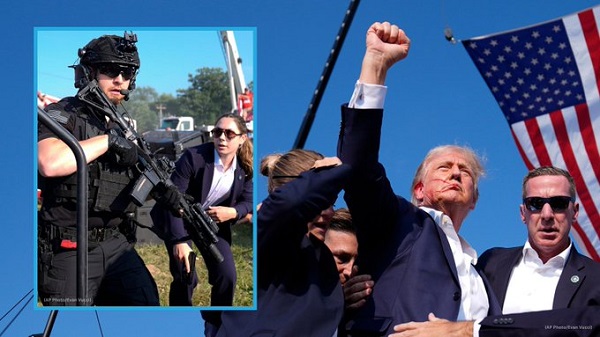
 International2 days ago
International2 days agoSecret Service suspends six agents nearly a year after Trump assassination attempt
-

 Environment22 hours ago
Environment22 hours agoEPA releases report on chemtrails, climate manipulation
-

 Business1 day ago
Business1 day agoCarney government should recognize that private sector drives Canada’s economy
-

 Bruce Dowbiggin1 day ago
Bruce Dowbiggin1 day agoThe Covid 19 Disaster: When Do We Get The Apologies?


